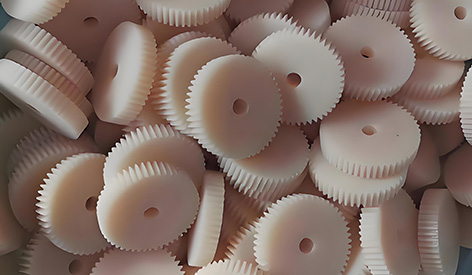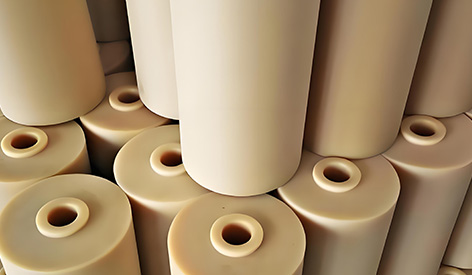ㆍPrivacy: We respect your privacy. Here you can find an example of a non-disclosure agreement. By submitting this form, you agree to our terms & conditions and privacy policy.
Views: 7 Author: Allen Xiao Publish Time: 2025-07-25 Origin: Site








Nylon is one of the most widely used synthetic materials in both industrial and consumer applications. But one question often arises: Is nylon a plastic? The short answer is yes—nylon is a type of plastic, more specifically, a synthetic thermoplastic polymer that falls under the category of polyamides. It’s known for its durability, flexibility, and resistance to wear, making it suitable for everything from automotive components to textiles.
content:
To clarify, nylon is indeed a plastic, but not just any plastic. It’s a high-performance engineering thermoplastic that can be molded into fibers, films, or solid shapes. Originally developed in the 1930s as a silk substitute, nylon has since evolved into a robust industrial material. It behaves like traditional plastics in that it can be melted, reformed, and hardened, but it offers additional mechanical and chemical resistance not found in lower-grade plastics.
Nylon’s plastic nature allows it to be used in applications where flexibility and strength are equally important, including gears, bushings, machine housings, and consumer products like toothbrushes or kitchen utensils.

Nylon is made through a chemical process called polymerization, in which monomers like adipic acid and hexamethylenediamine are combined to create long chains of molecules. This structure is what gives nylon its strength and elasticity.
There are several types of nylon, with Nylon 6 and Nylon 6,6 being the most common. These two types differ slightly in their chemical structure but share similar performance characteristics. Nylon 6 is typically easier to process and slightly less crystalline, while Nylon 6,6 offers higher melting points and superior abrasion resistance.
A critical question for users in consumer goods and food-related industries is: Is nylon safe? Nylon is generally regarded as safe when used in accordance with regulatory guidelines. It’s non-toxic, does not leach harmful substances under normal conditions, and is often FDA-approved for use in food contact applications.
However, safety can depend on additives or dyes used in processing. For example, untreated nylon is safer than colored nylon when exposed to high heat or food contact. In the medical field, nylon is also used to make surgical sutures and catheter components due to its biocompatibility and cleanliness.
One of the reasons nylon is favored across various industries is because of its incredible strength-to-weight ratio. Nylon is strong yet lightweight, which makes it an ideal substitute for metal parts in automotive and aerospace applications. It can withstand considerable mechanical stress, resist fatigue, and hold its shape under repeated use.
Additionally, nylon is known for its impact resistance and toughness, qualities that make it suitable for mechanical parts, outdoor gear, and high-wear applications. It also has excellent tensile strength and resists abrasion better than many other plastics.

While both nylon and rubber are flexible materials, they are very different in composition and behavior. Rubber is an elastomer, meaning it can stretch significantly and return to its original shape. It is also softer and more pliable, making it ideal for shock absorption and sealing.
Nylon, on the other hand, is stiffer and more durable. It’s better suited for applications that require structural integrity and long-term wear resistance. In short, rubber excels in flexibility and grip, while nylon leads in strength and precision.
There are multiple grades and types of nylon, each tailored to specific applications:
Nylon 6 – Excellent processability, good toughness.
Nylon 6,6 – Higher melting point, better dimensional stability.
Glass-filled nylon – Enhanced strength for load-bearing parts.
Lubricated nylon – Improved wear resistance in moving parts.
Fiber-grade nylon – Used in textiles like ropes, carpets, and clothing.
Each type offers a balance between rigidity, moisture absorption, and processing characteristics, allowing engineers and designers to choose the best formulation for their needs.
As sustainability becomes more critical, another question comes up: Is nylon recyclable? The answer is yes, nylon is recyclable, but with certain limitations. Virgin nylon can be difficult to recycle due to its chemical structure, but post-consumer and industrial nylon waste can often be reprocessed into pellets for reuse.
Some companies are investing in chemical recycling methods to break down nylon into its base monomers, which can then be repolymerized into high-quality material. These innovations are helping to reduce nylon’s environmental footprint, especially in industries like fashion and automotive manufacturing.

Nylon’s material properties go far beyond what most people associate with "plastic." It’s resistant to oils, chemicals, and UV light. It maintains stability across a wide temperature range and can be reinforced with additives to enhance performance.
It’s used in everything from:
Automotive under-hood components
Electrical housings
Industrial gears and fasteners
Sports equipment
Medical devices
Textile fibers for outdoor gear and apparel
Why Nylon Excels Across Key Manufacturing Processes
Injection Molding Nylon
Extrusion Nylon
CNC Machining Nylon
3D Printing Nylon (FDM/FFF)
Thermoforming Nylon
Its versatility as a material is matched by few others in the polymer world, making nylon a true engineering-grade plastic.
When compared to other plastics like ABS, PETG, or polypropylene, nylon stands out for its mechanical strength and thermal resistance. While ABS may be easier to machine or mold, nylon handles heat and wear much better. Polypropylene is more chemically resistant but not as strong. Nylon fills a niche where high performance, reliability, and longevity are required.
To answer the initial question—Is nylon a plastic?—yes, it is. But it's more than just a simple plastic. Nylon is a high-performance material with a wide range of applications due to its strength, safety, recyclability, and adaptability. From engineering components to textiles and medical parts, nylon continues to prove its value across industries
content is empty!

